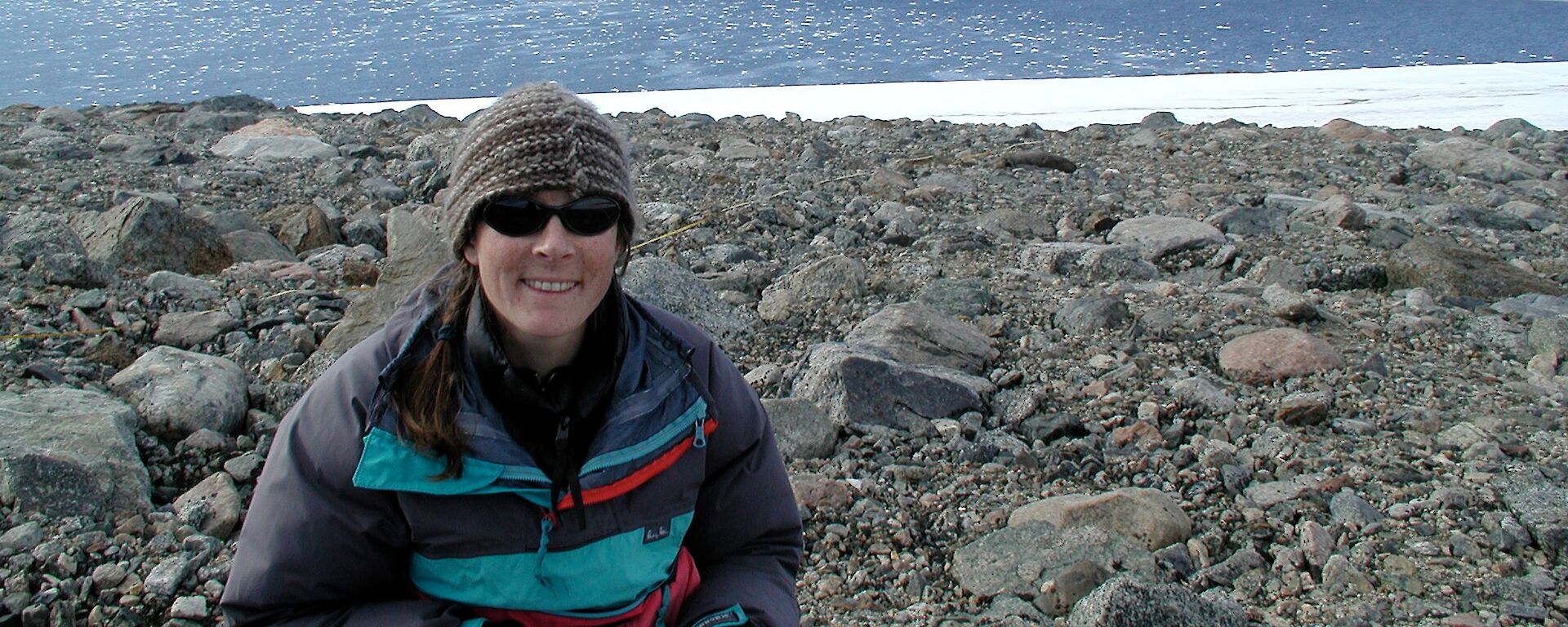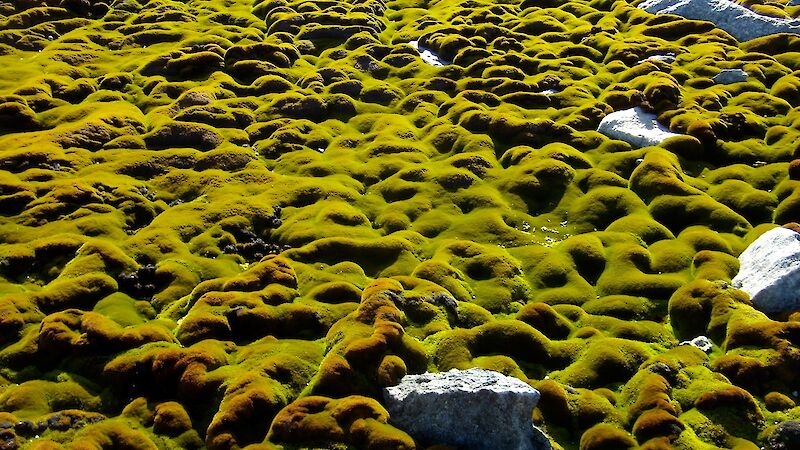A new study has found sudden and dramatic changes in East Antarctica’s old-growth moss, known as the “Daintree of the Antarctic”.
The 13-year study published in Nature Climate Change was led by researchers from the University of Wollongong (UOW), with support from scientists at the Australian Antarctic Division (AAD) and the Australian Nuclear Science and Technology Organisation (ANSTO).
Monitoring of moss beds in the Windmill Islands, near Australia’s Casey research station, began in 2000, as part of a PhD project led by the Division’s Dr Jane Wasley.
Dr Wasley said when the researchers returned in 2008, they found the moss beds had turned from bright green to dark red, which is an indication of stress.
“We never really suspected when we embarked on this work that we would observe such dramatic changes in such a short period of time,” Dr Wasley said.
“These slow growing communities are more sensitive to environmental changes than previously thought.”
The researchers also observed a significant change in the composition of moss species at the site, which is consistent with the onset of drier growing conditions.
When the study began, the moss beds were dominated by Schistidium antarctici, an Antarctic endemic species that can survive long periods under water.
By 2013, many areas were being encroached by two other moss species of wider distributions that thrive in drier conditions and are less tolerant to being submerged.
“There has been a change in local growing conditions linked to broader atmospheric changes around East Antarctica over the same period.” Dr Wasley said.
“Local and global climate data shows that parts of East Antarctica have become colder, drier and windier in recent decades, most likely in response to changes in the ozone layer.”
The moss plants themselves were also found to show evidence of drying conditions.
Long moss shoots were dated using a similar approach to that used for tree-rings.
This dating work was carried out by Laurence Clarke, a molecular ecologist with the AAD and Antarctic Climate & Ecosystems Cooperative Research Centre.
Markers within dated sections of the moss shoots revealed that the moss beds have become drier over recent decades.
The work is supported by the University of Wollongong’s Global Challenges Program and the Australian Antarctic Division.



